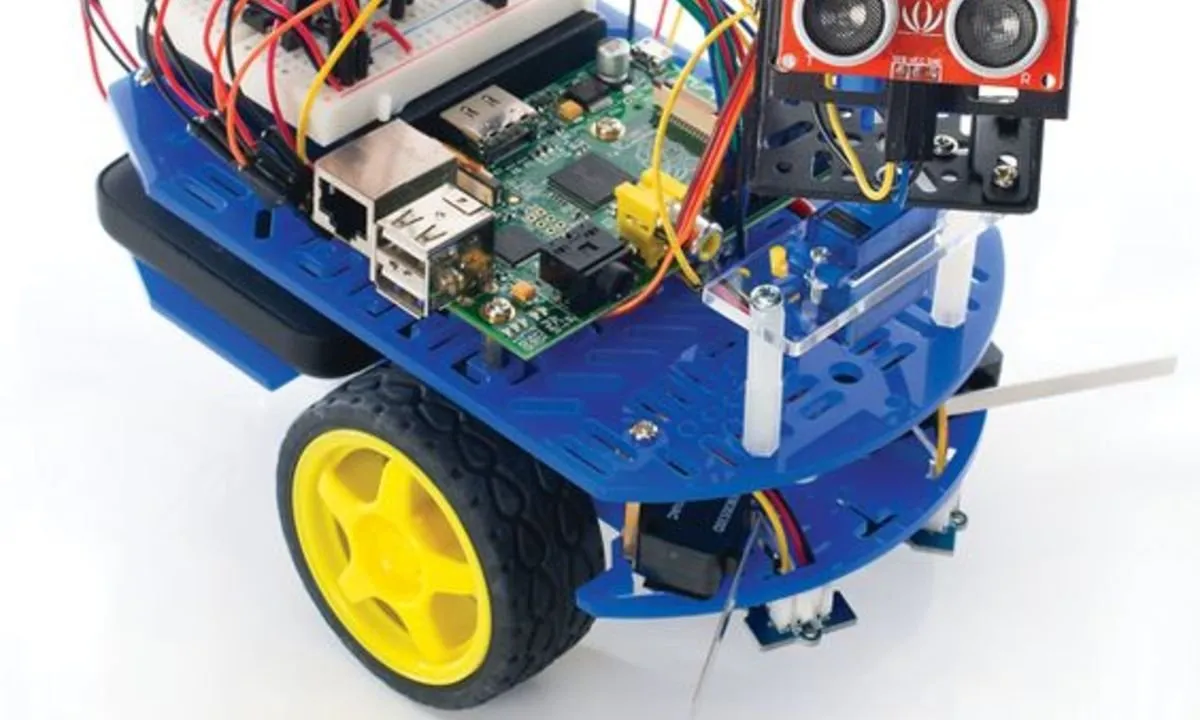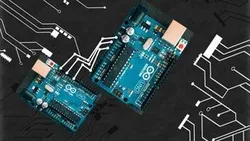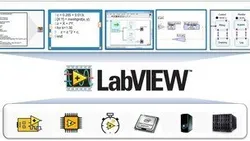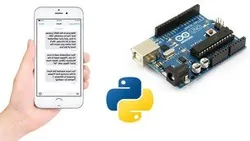
Building Arduino robots and devices 
Using Arduino, anyone can now create robots and devices that interact with the physical world. This technology allows people to explore the forces of nature and bring them under control. ▼
ADVERTISEMENT
Course Feature
![]() Cost:
Cost:
Free
![]() Provider:
Provider:
Coursera
![]() Certificate:
Certificate:
Paid Certification
![]() Language:
Language:
English
![]() Start Date:
Start Date:
28th Feb, 2022
Course Overview
❗The content presented here is sourced directly from Coursera platform. For comprehensive course details, including enrollment information, simply click on the 'Go to class' link on our website.
Updated in [April 29th, 2023]
Course Overview
This course is designed to teach you how to build Arduino robots and devices. You will learn how to assemble devices that interact with the physical world, program them using the Arduino platform, read data from sensors, and control indexing and movement. You will also learn how to visualize data on a PC, create a web page to demonstrate your device, and configure and use an FDM 3D-printer. This course is suitable for anyone interested in robotics, home and industrial automation, industrial design, advertising, and art.
Possible Development Directions
This course will provide you with the necessary skills to build Arduino robots and devices. After completing the course, you can further develop your skills by exploring more advanced topics such as artificial intelligence, machine learning, and computer vision. You can also explore different types of sensors and actuators, and learn how to integrate them into your projects.
Related Learning Suggestions
To get the most out of this course, it is recommended that you have some basic programming skills and a good understanding of English. You should also have access to the necessary materials and tools, such as Arduino boards, sensors, and actuators. Additionally, it is recommended that you explore other related topics such as electronics, microcontrollers, and embedded systems. Finally, it is important to practice and experiment with the concepts you learn in this course.
[Applications]
After taking this course, participants will be able to apply their knowledge to create Arduino robots and devices that interact with the physical world. They will be able to design, assemble, code, and diagnose their own devices, as well as visualize data on a PC, create a web page to demonstrate their device, and configure and use an FDM 3D-printer. This course is useful for those interested in robotics, home and industrial automation, industrial design, advertising, and art. Participants will need to purchase Arduino components and follow the illustrated examples to experiment on their own.
[Career Paths]
Job position paths recommended to learners after this course include:
1. Robotics Engineer: Robotics engineers design, build, and program robots. They use their knowledge of engineering, physics, and mathematics to develop robots that can be used in a variety of industries, such as manufacturing, healthcare, and defense. Robotics engineers are also responsible for testing and troubleshooting robots, as well as developing new technologies to improve their performance. The demand for robotics engineers is expected to grow significantly in the coming years, as robots become increasingly important in the workplace.
2. Automation Engineer: Automation engineers are responsible for designing, developing, and implementing automated systems. They use their knowledge of engineering, computer science, and mathematics to develop systems that can automate processes and tasks. Automation engineers are also responsible for testing and troubleshooting automated systems, as well as developing new technologies to improve their performance. The demand for automation engineers is expected to grow significantly in the coming years, as automation becomes increasingly important in the workplace.
3. Industrial Designer: Industrial designers are responsible for designing products and systems for industrial use. They use their knowledge of engineering, physics, and mathematics to develop products that are safe, efficient, and aesthetically pleasing. Industrial designers are also responsible for testing and troubleshooting products, as well as developing new technologies to improve their performance. The demand for industrial designers is expected to grow significantly in the coming years, as products become increasingly complex and specialized.
4. 3D Printing Technician: 3D printing technicians are responsible for operating 3D printers and creating 3D models. They use their knowledge of engineering, physics, and mathematics to create 3D models that can be used in a variety of industries, such as manufacturing, healthcare, and defense. 3D printing technicians are also responsible for testing and troubleshooting 3D printers, as well as developing new technologies to improve their performance. The demand for 3D printing technicians is expected to grow significantly in the coming years, as 3D printing becomes increasingly important in the workplace.
[Education Paths]
1. Bachelor of Science in Robotics: This degree program focuses on the design, development, and implementation of robotic systems. It covers topics such as artificial intelligence, computer vision, machine learning, and control systems. Students will learn how to design and build robots, program them, and use them in various applications. This degree is becoming increasingly popular as robots become more prevalent in our lives.
2. Master of Science in Robotics: This degree program is designed for those who want to specialize in robotics. It covers topics such as robotics engineering, artificial intelligence, computer vision, and machine learning. Students will learn how to design and build robots, program them, and use them in various applications. This degree is becoming increasingly popular as robots become more prevalent in our lives.
3. Doctor of Philosophy in Robotics: This degree program is designed for those who want to specialize in robotics. It covers topics such as robotics engineering, artificial intelligence, computer vision, and machine learning. Students will learn how to design and build robots, program them, and use them in various applications. This degree is becoming increasingly popular as robots become more prevalent in our lives.
4. Master of Science in Artificial Intelligence: This degree program focuses on the design, development, and implementation of artificial intelligence systems. It covers topics such as machine learning, natural language processing, computer vision, and robotics. Students will learn how to design and build AI systems, program them, and use them in various applications. This degree is becoming increasingly popular as AI becomes more prevalent in our lives.
Course Syllabus
Week 1
Welcome to the course! During Week 1, we are going to introduce you to the course (go through the Introduction, that’s very important). Then we shall start our work: getting acquainted with Arduino, the development environment and our first components. You will learn how to assemble circuits on a breadboard and will write your first program and assemble your first device. Don’t forget about the DIY section, which is also very importantWeek 2
It’s time to learn how to receive data with the help of sensors. During Week 2, we will teach you how to read off digital and analog signals, exchange data with a computer, create more complex algorithms, and use new output devices.Week 3
During Week 3, you will learn to explore the world around you with the help of a distance sensor, and visualize data on a computer. You are also going improve your programming skills by creating a device with moving components.Week 4
After going through Week 4, you will be able to connect your device to a network, plan its creation beforehand , control heavy loads, and power your device correctly.Week 5.
Let’s turn one wheel and then two wheels at once, and the robot car will start moving. It’ll be moving along the line or under your control. It could as well be just messing with your hand with which you are trying to control it.Week 6
Having learnt to create a step motor, you can create devices which can perform very precise actions. For example, a 3D printer, which we will study in detail and then use to print some components.Course Provider

Provider Coursera's Stats at AZClass
Discussion and Reviews
0.0 (Based on 0 reviews)
Explore Similar Online Courses

Getting Started with Apache Ambari

Design Presentations with Canva

Python for Informatics: Exploring Information

Social Network Analysis

Introduction to Systematic Review and Meta-Analysis

The Analytics Edge

DCO042 - Python For Informatics

Causal Diagrams: Draw Your Assumptions Before Your Conclusions

Whole genome sequencing of bacterial genomes - tools and applications

Arduino Communication with SPI Protocol

Interfacing LabVIEW With Arduino via LINX


Start your review of Building Arduino robots and devices